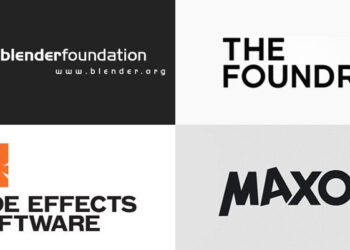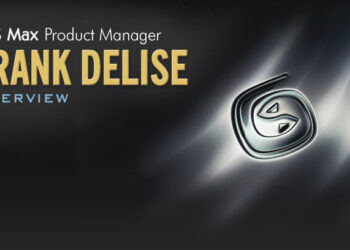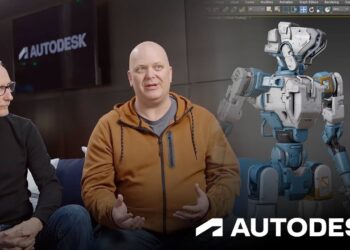The news about the framework being developed by Artur Leao, Daniel Santana and Jonathan de Blok, and its related plugins have been received with a lot of enthusiasm and curiosity. The project has been renamed to Nyx Framework (it was previously known as Nexus) and is being developed through You can do it! VFX. We had the pleasure of talking to Artur Leao to find out more information about the framework and what new possibilities it will bring to CG artists and production studios.
What is the Nyx Framework?

Nyx Framework is in its core a communication framework that makes it easier for developers, including us, to have proper way to send data back and forth between multiple DCC apps like 3DS Max, Maya, After Effects, Nuke, Photoshop, etc.
If you look at Nyx DBR, it’s being used within a
single software package (3DS Max) while Voltron shows it’s
interoperability strengths by having 3DS Max communicating with After
Effects.
It’s a tool for TDs, to which we would like to
remove the burden of handling low level network and protocol handling.
Using Nyx communication between apps is as high level as sending an
email. As a TD you will be able to write your own Nyx plugins
which can be software agnostic and only a small portion of it needs to
be written specifically for the software you want to support (mostly
just UI).
We also have a system that helps developers with
licensing their own plugins and coming from a small developer/scripter
background we know how much of a hassle that can be, so hopefully Nyx
Framework will empower smaller studios and developers to release their
plugins and tools without the need to worry about licensing.
Currently we are supporting C# but Python might be
an option too.
You have announced two applications based on the
framework that are being actively developed: DBR and Voltron. What
features do they offer?
Nyx DBR is a distributed rendering plugin that is
render agnostic, which means it will work with most of the commercial
renderers available for 3DS Max. For us, that is one of its best
features, you as a user will be able to keep your workflow consistent
when rendering with Iray, V-Ray, Corona, etc.
In its current status, Nyx DBR allows you to do
selective scene updates, with other DBR systems you need to keep
sending the entire scene over and over again. For example you can send
over a new or changed camera and redo the shot.
Cherry on top of the cake is the fact that you can
submit your render, get immediate feedback from all slaves while you
keep working on your 3DS Max instance. No interruption whatsoever, Nyx
DBR does not block your app.
Nyx Voltron shows a bit of what can be done with
Nyx Framework and it’s a plugin that aims to connect most of Adobe’s CC
apps to 3DS Max. First things first: 3DS Max to After Effects.
We were able to build a bidirectional flow between
the two programs and you can easily link objects between the two apps,
share the same timeline and timeline control, and in our latest
iteration we have After Effects reproducing 3DS Max object hierarchy
without hassle. We have basic support for curves, whatever
curve/animation setup you have in 3DS Max, you will get exactly the
same in After Effects and vice versa, as you can see from some of our
development videos.
All of this happens in realtime and without baking
any keys. Press a button and you’re done.
When do you expect to release them?
Right now, we are in pre-alpha stage for Nyx DBR,
which is very very early in development and our plan is to release when
we feel we have a good stable product, so for now we would prefer not
to
rush and throw dates.
I can tell you something else though, although we
are very early in development we decided to implement an “Early
Adopter” system for our products, which means we are opening slots for
sales on each development stage (Pre-Alpha, Alpha and Beta) and in
return we offer those “Early Adopters” a good discount and of course
they get access to the plugin right now. For now this is just available
for Nyx DBR but it will be soon available for Nyx Voltron too. This
will also allow us to have feedback early in development and adjust our
features to the needs of our users.
Nyx DBR has a Standard License (99€) that allows
you to use up to 10 nodes and Plus License (179€) allows you to use up
to 100 Nodes. We have 20 open slots for Nyx DBR as an “Early Adopter”
at 20% discount. Feel free to contact us at info@ycdivfx.com
if you are interested.
We have a specific license scheme for Render Farms
too, contact us for more details on that.
You have stated that the stand-alone Nyx Framework
will allow developers to create tools for CG applications other than
3DS Max and After Effects. When do you plan to make it available?
That is true and we hope to release it as soon as
possible. We feel we have its core functionality already at a good
place but it’s still too soon to say dates.
It will probably only happen after we release both
Nyx DBR and Nyx Voltron. These projects allows us to foresee
limitations and fix them before releasing the Nyx Framework to the
public, therefore it will be production proven.
We already have some documentation and we will
have some sample plugins for TDs to use as first step into the Nyx
Framework.
What kind of applications could be developed with
it?
Well, you name it! I can tell you we have some
cool ideas and I’m sure that once we get the Nyx Framework into the
hands of TDs they will be able to build a lot of creative stuff. I
would say that it will be a very good support tool for pipeline work
inside studios making it easier to handle multiple DCC apps like most
studios nowadays do. You can either write your own pipeline tools or
just write support tools to integrate in your current pipeline.












Great interview. This framework looks like it’ll open new possibilities to 3ds Max and making it even more useful.
Thanks You Can Do It! VFX.